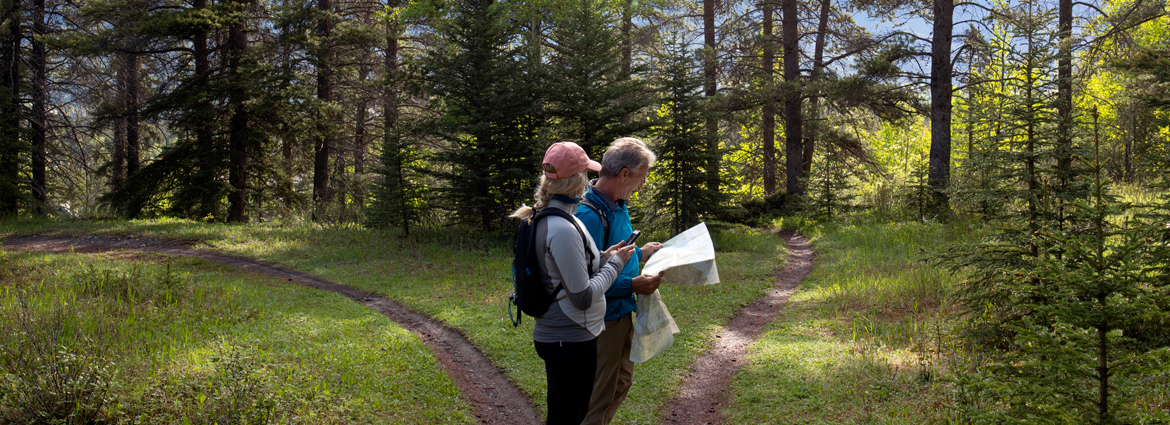Understanding down payments and why they’re important
To get a mortgage, you will need a down payment—a lump sum of money that you pay towards the home purchase. “This is the percentage of the purchase price of the home that the buyer pays upfront from their own funds and will not be a part of the mortgage,” says Steven Resendes, Branch Manager at Coast Capital. Coming up with that cash can be a challenge—especially if you plan to put down 20% or more.
“How it works is the lender deducts the down payment from the total purchase price of the property, and your mortgage covers the remainder,” says Resendes. “So, if the purchase price is $500,000, a 20% down payment would be $100,000 and your mortgage loan would then be $400,000.”
But why 20% down? Historically that’s been the minimum payment amount required for conventional mortgages in order to reduce the number of high-risk situations where people have borrowed more money than they can repay. However, this is not a rule (as you will see explored in the next section). According to the Financial Consumer Agency of Canada, for properties up to $500,000, you’ll need at least 5%. So, if you’re buying a $400,000 home, a 5% down payment would be $20,000. But as the price tag increases, so does the baseline.
For properties above $500,000, you must put 5% down for the first $500,000 and 10% down for the remaining amount. For instance, mortgaging a $600,000 home would require a $35,000 down payment at minimum: $25,000 for the first $500,000 (which is 5%), and $10,000 for the remaining $100,000 (which is 10%). For anything a million or above, you’ll be expected to drum up 20% of the property’s purchase price (in this instance, $200,000).
How much down payment do you need?
| Purchase price of the property | Minimum down payment amount | |
|---|---|---|
| $500,000 or less | 5% of the purchase price | |
| $500,000 to $999,999 | 5% for the first $500,000 of the purchase price + 10% for the remainder of the purchase price above $500,000 | |
| $1 million or more | 20% of the purchase price | |
Source: Government of Canada
That being said, a lender can require a larger down payment depending on the circumstances. So, consider the above percentages as rough guidelines.
Putting less than 20% down: The pros and cons
If 5% is the minimum, why would anyone want to put down more if it’s not required? The answer isn’t that simple as it involves potential risk to both you and the lender. If you’re debating on what’s better for your financial situation, here’s the good and the “not-so-good” about putting less money down on your new home.
Pros: Reasons to put 20% down if you can
1. Save money on mortgage insurance: The primary reason why bigger is better is that you have to buy mortgage loan insurance if you’re putting less than 20% down. “Mortgage loan insurance protects the lender in case you can’t make your payments,” says Resendes. “It also ensures you get a reasonable interest rate, even with your smaller down payment.”
The cost of mortgage loan insurance is calculated as a percentage of the mortgage and based on your down payment size. Your lender will do the math but expect a bulky bill: The premiums (or fees) range between 0.6% to 4.50% of the total mortgage amount. The bottom line: Paying 20% upfront typically means escaping the mandatory mortgage loan insurance and saving thousands of dollars.
2. Pay less interest: Insurance payments aside, a larger down payment also means a smaller mortgage. You’ll owe less to the lender, build greater equity in your home, and above all, save big bucks on interest rate charges.
3. Have more flexibility: A 20% down payment opens doors with lenders. With a bigger cheque in hand, you’ll often qualify for a larger mortgage and a longer amortization period (the number of years it will take to pay the loan in full), which could help make snagging your dream home a reality. “When you put 20% down, you can amortize the mortgage over 30 years instead of 25 years,” says Resendes. “As you can amortize the payments over a longer period, you could qualify for a slightly larger mortgage.”
4. Boost your odds of approval: While 5% down might be the minimum, a lender can require a larger down payment before approving your mortgage loan application. For instance, those who are self-employed, have low credit scores, or are purchasing vacant land are commonly asked to cut larger cheques. So, in some cases, the ability to put down a bigger payment, the better your shot at getting approved.
Cons: Why you may not want to put 20% down
1. Just entering the housing market: If you live in a hot real estate market, saving a down payment of 20% can be a steep hill to climb. For instance, the average selling price in the Greater Toronto Area (GTA) was $1 million in 2021—meaning you may need at least $200,000 to put down to get into the GTA real estate game. It may take several years to save up that kind of cash, and meanwhile, housing prices will likely continue to increase. In that case, making the 5% minimum threshold may be the best way to get your foot in the door. “A smaller down payment is especially helpful for first-time homebuyers to get them into the housing market,” says Resendes.
2. May not be worth it: Even if you come up with a 20% down payment, a lender can still require that you purchase mortgage loan insurance. For instance, this can happen in cases where the mortgage applicant is self-employed or has a low credit rating. Ultimately, the lender makes the final call.
3. Want to free up investing potential: That 20% down payment is a big chunk of change that could otherwise be invested in a TFSA or RRSP. Compared to real estate, stocks tend to increase in value faster and produce higher-than-average annual returns. For instance, between 1993 to 2018, the average annual gain of Canadian real estate prices was 4.5%. In contrast, the average return from stocks was 8.3%. Depending on your financial goals, going with the lowest amount down and putting your savings into a risk-appropriate diversified investment portfolio may make more sense.
Practicing savvy savings strategies
In order to buy any home, you will definitely need access to quite a bit of cash. Here are a few tips to transform you into a supersaver and build up that down payment ASAP:
1. Decide on a number: Figure out how much you can afford to save towards a down payment—which starts with scrutinizing your cash flow and putting an aggressive budget in place if you don’t already have one. How much extra dough is leftover at the end of the month to kick towards your savings? “Create a line in your budget for your down payment savings—just like for other fixed expenses,” says Resendes, “such as your phone, rent, or groceries.”
If you’re new to budgeting, an effective technique is the 50:20:30 rule, which recommends allocating 20% of your after-tax income towards savings and debt repayment. So, if your paycheque is $2,000 after taxes, that would mean socking away $400 bi-weekly towards your financial future. Or create a comprehensive budget using the Coast Capital online budget calculator. Just fill out the questionnaire and the tool crunches the numbers, giving you a recommended budget breakdown.
Another tool to tap into is our online mortgage calculator. It can help ballpark how much you may be eligible to borrow for a mortgage, and conversely, how much of a down payment you may need. That’ll give you a clear target to strive for during your savings journey.
2. Automate your savings: Once you know how much to save, set up a pre-authorized deposit. How it works: a lump sum of money is transferred from your chequing account into your savings account on a regularly scheduled day. You can decide how much and when—it could be the last day of the month or a bi-weekly deposit that coincides with your paycheque. By putting your savings on autopilot, you’re “paying yourself first” and making your financial goals top priority.
3. Set up a “house fund”: Try opening a house fund—a separate savings account to safeguard the deposits for your future down payment. If all your money is lumped into one chequing account, it’s easy to spend the excess dollars impulsively. Plus, creating a stand-alone account makes tracking your progress simple and can motivate you to keep going.
In terms of where to park your money—also consider adding any bonuses, expense cheques, and tax refunds—choose a low-risk account that allows you to safely grow and easily access your savings. For instance, Coast Capital’s High-Interest Savings Account offers a reliable interest rate without any monthly fee or minimum balance requirement. You can also stash your cash in a TFSA so the interest grows tax-free. Either way, you’ll get a good rate and easy access to your funds anytime.
4. Lock-in for the short-term: If you’re chasing the best rates, look at a GIC—a type of investment that offers a fixed, guaranteed interest rate. Considered one of the safest investments in Canada, it’s similar to a savings account but generally offers a better-than-average interest rate. However, the cash is usually “locked-in” for a set time (usually one to five years), and unless it’s a redeemable GIC, you’ll pay a penalty to cash out early. Overall, if you’re saving for a down payment and don’t mind a short-term cash commitment, a GIC can be an excellent vehicle for growing your savings risk-free.
5. Track your progress: Online budgeting apps and tools make it very easy to monitor how you’re doing. For instance, Coast Capital’s free Money Manager financial management toolcan analyze your cash flow and spot any potential savings opportunities to help boost your “house fund.”
Trying for Canadian government incentives and assistance
If you’re struggling to gather a down payment, there are some good options to turn to. Canadian government incentives and assistance programs exist to help first-time homebuyers or those who meet specific requirements:
1. The Home Buyers Plan: If it’s your first time at the real estate rodeo, consider the Home Buyers’ Plan—a federal program that allows first-time homebuyers to tap into their Registered Retirement Savings Plans (RRSP) to fund a down payment. Under this program, you can borrow up to $35,000 tax-free from your RRSP to buy or build a qualifying home. But there’s a catch: You must pay back the amount to your RRSP within 15 years, starting from the second year after your withdrawal.
2. First-Time Home Buyer Incentive: If you’re open to a partnership with the Government of Canada, there’s the First-Time Home Buyer Incentive—a federal program that loans first-time homebuyers 5% to 10% of the property’s purchase price interest-free to put towards a down payment. This offering helps make homeownership easier and more affordable by decreasing your mortgage payments.
But since it’s a shared equity mortgage—meaning the government “shares in the upside and downside of the property value”—there are some strings attached. First, it’s not free money: You must repay the incentive within 25 years. Plus, incentive reimbursement is based on the property’s fair market value at the time of repayment. So, if you originally bought the property for $200,000 but it appreciates to $300,000 at the time of repayment, you’ll owe 5% of $300,000 (or $15,000). If you sell, the government would take the same cut of the profit. Lastly, you’ll have to meet certain eligibility requirements to qualify for this incentive.
3. First-Time Home Buyers’ Tax Credit: If you bought a home for the first time in the last year, you may be eligible for the federal First-Time Home Buyers’ Tax Credit—a $5,000 non-refundable income tax credit that can be claimed on your taxes.
4. GST/HST New Housing Rebate: If you built or renovated a new house or converted a non-residential property into a home, look into the GST/HST New Housing Rebate. It allows you to cover some of the GST/HST that you paid to buy the property.
Canadian provincial and municipal governments may offer additional credits, incentives, and assistance programs for first-time homebuyers or builders. Search your local government websites to see what’s available.
Preparing for next steps
Despite intimidating headlines and the everchanging housing market, homeownership can be a reality for those who may think it’s not quite possible. You just need a plan and the right savings strategies in place. Book a chat with a Coast Capital Mortgage Advisor, who can review your plan and help you achieve your goals. Above all, stay positive in your search and you could be holding the keys to your new home quicker than you imagined.



